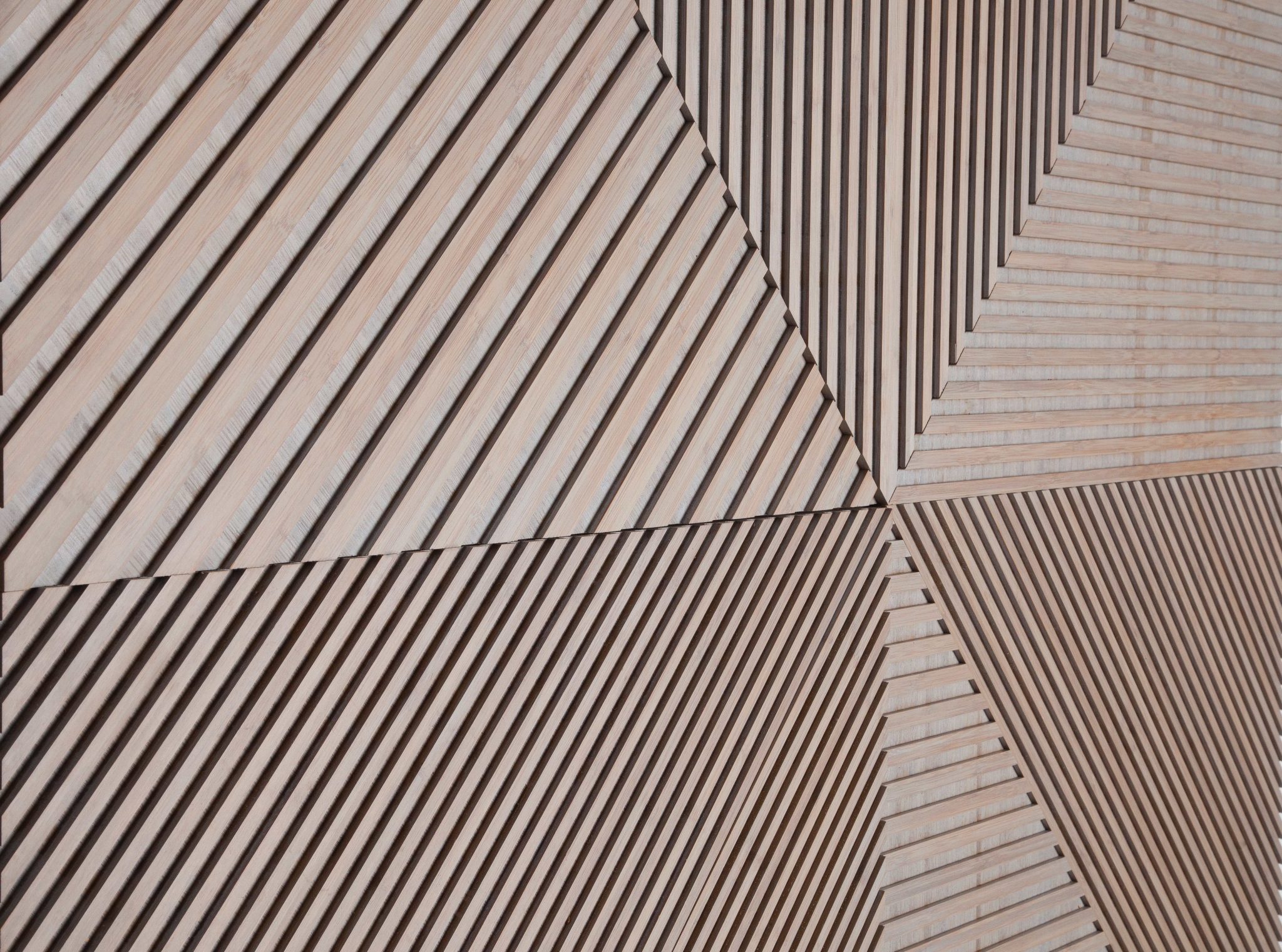
Bamboo enjoying sustainable growth as building material
Bamboo enjoying sustainable growth as building material
Share
Bamboo is versatile and resilient and can be replenished and harvested more sustainably than any other timber. ADR takes a looks at the history of the material and how technology is shaping a new era for this sustainable product.
Bamboo is ancient. It goes back so far, in fact, that there are records of it being used in China for paper and building materials around 7000 years ago. But by far its greatest feature is its incredible growth rate and strength, making it a highly sustainable building option. But, in spite of an illustrious history and indisputable benefits, it’s only more recently that it has been building momentum in Australia.

Fractal by Plyboo – a product that uses bamboo panelling to allow customisable wall features. a bamboo building material by Plyboo in situ
A unique structure
Bamboo, rather unexpectedly, falls into the grasses plant family. As such, it has a hollow interior stalk comprising airtight capsules, giving it a lot of strength. Couple that with a rhizome-root structure and the result gives it an incredibly fast-growing nature. Bamboo’s unique composition means it has a higher compressive strength than many other building materials, including traditional timber, bricks and concrete. It also has a high threshold of tensile strength, which is why it is has been used as scaffolding across many Asian countries.
Built-in sustainability
One of the most beautiful things about bamboo is the fact that it is inherently sustainable. The way it grows means it does not require fertilisers, pesticides or irrigation. It grows so rapidly and without the need for replanting that it naturally regenerates in approximate five-year cycles.
Mark McCarthy, president of the Bamboo Society of Australia, adds that, “Bamboo is considered to be sustainable due to its ability to produce new culms or poles each year and when they reach four to seven years old they can be harvested without affecting the rest of the clump, unlike a tree that is killed for its wood.”
Additionally, Bamboo can be planted on eroded land, including slopes and it will give stability to the land. This is particularly important in communities that are surrounded by land that is no longer productive. Planting and growing bamboo can feed into the local economy while providing a useful material that continually replenishes.
But if purely sustainable measures are what you’re looking for, there are other considerations to take on board – namely where it comes from and how it’s harvested. As with any material, these are the kinds of questions to ask to ensure you’re going with the best solution.

A close-up of Fractal by Plyboo
New technology
While bamboo can be used in a multitude of applications in the home, from flooring and timber alternatives, it is also a growing area of innovation. One such company, which has only recently made its products available in Australia through Stack Panel, is the US-based Plyboo. Creating unique panelling systems with acoustic properties, Plyboo embraces the inherent sustainability of bamboo, bringing it into the 21st century. When describing the carved, acoustic wall coverings, Angus Stocks, founder of Plyboo, explains, “The product is made by laminating a 19-millimetre strip by a six-millimetre strip front to back to create a real core panel. The real core panel is a void less panel, which allows us to actually carve the panel out. We then apply a line of pigments that finishes it with a 99 percent UV rating. They are acoustical in form, but they are beautiful and incredibly resilient in function. These panels can actually be bent to create acoustical ceilings and walls.”
Even though these decorative additions have created an almost completely new product, Stocks explains, “It is done with the idea that bamboo itself has these wonderful properties and one of them is that it refracts tremendous amounts of light. A lot of woods take light and kind of suck it in and it goes dead. Bamboo is very lively and it actually kicks light out.”
In addition to the wallcovering, Plyboo has also developed floors that can withstand heavy wear, aptly titled Stiletto, and a customisable wallcovering system called Fractal.
















